Dr Amanda Gummer, Founder Good Play Guide, In Conversation With Edx Education
Dr Amanda Gummer, Founder Good Play Guide, In Conversation With Edx Education
Episode 30 – Heather Welch, Edx Education in conversation with Dr Amanda Gummer
Dr Amanda Gummer, Author, Research psychologist specialising in child development, Entrepreneur, Founder of 3 organisations:
- Good Play Guide (prev Fundamentally Children)
- FUNdamentals
- Good Toy Guide Ltd
Helping the world be more playful!
Today we are chatting to Dr Amanda Gummer Good Play Guide, Importance of play and toys for early years development , Safety and Trends in Toys for 2021-22.
Here are the highlights for the episode:
{2:42} Amanda’s inspiration for the good play guide
{5:33} Parental pressure when it comes to play
{9:50} Where to find the Play Pyramid Framework
{12:39} The impact of the pandemic on children
{15:23} How to find good quality toys
{22:22} Gender-neutral toys
{24:49} Toy trends for 2021/2022
{27:07} Amanda’s favourite game
Heather Welch (00:01)
You’re listening to education experts with edX education. Education is evolving. Join Heather Welch for edX education, chatting with teachers, psychologists, parents, authors, creators, and other tons of experts to keep up with the trends and what’s happening from around the globe. This podcast series, mediates education discusses, home learning school readiness, being creatives changes in education, discussing what’s next hands-on learning. Or as we like to say, learning through play.
Heather Welch (00:31)
Hi everyone. I’m Heather Welch from edx education today. We’ll be in conversation with Dr Amanda Gummer. She is an author, a research psychologist specializing in child development and entrepreneur founding of three organizations.
The good play guide fundamentals and the good toy guide and Mandarin is helping the world be more playful, which we all need, especially in the last 12 months today, we’re chatting with Dr. Amanda Gummer on good play guide, importance of play and toys for early years. Development safety for entrance into toys for 2021. Welcome Dr. Amanda Gummer. Thank you so much for having me. That’s amazing. It was amazing. You could join us today, but I’m going to ask you to introduce yourself to our listeners and your passion for promoting the value of play and positive parenting in child development.
Dr Amanda Gummer (01:21)
So I’m Amanda Gummer and I am a research psychologist, and I’ve been working with people, making things for children for about 20 years now. And I have grown up with toys because my dad used to sell toys and the various sort of eclectic experiences I’ve had over the years. I’ve just seen how play is so powerful in helping address so many really key, developmental, but benefit.
So, you know, whether it’s from friendships, from learning through emotional wellbeing, physical activity and health, it’s just, I feel like it’s the answer to pretty much a lot of the world’s problems today. So I’ve been on a, on a mission to make the world more playful, and I am excited to be talking to you about it.
Heather Welch (02:08)
Fantastic. I love that. So you’re you grew up with a toy store or a toy, was it a toy store or a toy?
Dr Amanda Gummer (02:15)
Well, yeah, mine. So my dad was selling toys for companies into independent shops. He would have samples of everything and he would get me and my brother, the toys to say so that he knew how they, how they work so that he could then go and explain it to his customers. I’ve been testing toys since I was a kid.
Heather Welch (02:32)
That’s the, you know what, that is the best way to test the toys. I’ve I’ve tried out a lot of toys on my own children as well, over the years, and actually been, they’ve been tried out on me as well. Look, what was your, what’s the inspiration for founding the good play guide?
Dr Amanda Gummer (02:46)
I think it’s, it comes from a combination of, of experiences. I was teaching children in Hong Kong, English, and, children’s special needs and children who wanted to learn English and from a sort of a fairly rigid education system. This is all after school. So it had to be play-based because those kids have been sat at desks all day and they’d been, they’d been learning. So sort of looking at how to learn through play.
I did that. I worked in a, I volunteered in a women’s refuge and the children in the refuge were obviously lots of very challenging experiences that they’d had. And they were, some of them weren’t able to go to school and the mums obviously have quite a lot going on for them. And the children were sort of largely ignored. So again, I went in and developed some play-based activities and educational stuff again with a very sort of clay focus and just was amazed at how powerful that was for them.
Dr Amanda Gummer (03:42)
And I think the good play guy came out of a combination of, of those kinds of experiences, learning sort of watching my kids play and grow up and how, how play just brings families together. And, and it’s so universally accepted. It’s not, it’s not stigmatized in any way. You know, if you go on a parenting course, people assume you, you’re not a good parent and you need to get better. Whereas if you go to a play club it’s just fun and you can get an awful lot of benefit from all of that sort of stuff. And I was doing the researchers, you know, the consultancy was running, that was fundamentalism and the research was going well. And then I was getting toy companies asking me for a quick way to do some research, a quicker and easier way to do some research.
I was getting parents asking me how, how they could tell whether a toy that their kids had seen advertised on telly was going to be any good for them. And so I sort of put the two together and created a good toy guide. And then the good play guide sort of evolved out of that. Cause we added the good guide and, and that, we’re currently revamping good play guide.com to include other guides. So good activities guy could baby guy, so that there is that kind of playful ecosystem where parents can come for free advice and information and reviews of products, but all with a kind of a push towards making, making family lives more playful and helping children thrive through play.
Heather Welch (05:02)
I think sometimes I know as a parent and if you look at like these Insta accounts and social media is that you think, Oh, wow, play is so complex. And it has to be so complex because you see these setups and they’re amazing. And these playrooms that are amazing. I mean, man, if he came to my playroom, it looks more like a hurricane came through it. Honestly, my two boys are amazing at being able to get toys from one end to the other. And it’s not even that we have that many. It’s just that that’s, that’s how they play. There’s so much going on in their brains.
Dr Amanda Gummer (05:32)
Yeah, absolutely. I think we get a lot of parents saying, Oh, you know, I don’t really play with my kids cause I don’t want to get it wrong. There’s this pressure on parents at the moment to sort of do the right thing by their kids. And there’s so much advice and information out there on what you should or shouldn’t do to be a good parent.
I think parents are often paralyzed by fear and because they don’t want to get it wrong because they think there’s a, there’s a right and a wrong way of playing with your kids. They tend not to do anything and actually just not overthinking it and letting the kids lead and just kind of getting down on their level and going for it is all the thinking you need to put behind it because kids play naturally. That is that’s their default state.
Dr Amanda Gummer (06:12)
If you like, and whether that’s energetic play or creative play or quiet play, when they’re allowed to play and they’re left sort of left to choose their own activities, they will choose something that suits them and their mood at the time and, and their sort of how they’re feeling and where their ability levels are up. They will do that naturally.
And I’m just getting involved with them with that, taken an interest in what they’re doing. That’s all you need to do to start with you. Don’t have to dress up and go on a pirate adventure and you don’t need to sit and play hours of ball games or trash the house and, you know, risk getting paint on the walls. If that’s not your thing, that’s absolutely fine. But it’s so beneficial when, when kids see you playing with them and that relationship that you get that communication, the trust, the attachment, all of that, it’s really reinforced when, when families play together.
Heather Welch (07:04)
That’s interesting. We were talking to someone who’s joined Marchese the other day and she was, she goes by the connection before correction. So when you play, it’s about connecting with the child in the way that they have it, rather than correcting the child on everything that they need to do. So, you know, if they’re chose chosen blue, then you don’t say you need pink or anything like that, or it’s allowing them to actually, as you say, being child led, there was this wonderful, quote I read the other day by Dr. Sarah Monday and she says our brains are wired to play and wide through play.
I love this as it allows us to see the importance of play, because I think as parents and many people don’t see the benefits, they, they ha we have this club and this culture where we need to have this curriculum and club and everything is structured. And if this toys and STEM and this and that, then we can’t touch it rather than looking at the open-ended play.
Dr Amanda Gummer (07:57)
Yeah. that’s, that’s really important. Redeveloped, a sort of a framework for play called the balance play pyramid. And we use the analogy of a balanced food diet and actually in the same way that you have superfoods. You know, if your kids wanted more vegetables, you would give them as many vegetables as they would have happily, but you limit how many crisps and chocolates that they have.
It’s a similar thing for play and actually the super foods of the play diet or the social imaginative free childhood active play. So when the kids are outside playing freely and imaginatively with their friends, they are learning so much. And we can sometimes see that as a sort of naughty behavior or, you know, or it’s just a bit high energy. And actually sometimes we just get to sit down and play, you know, and be quiet.
Dr Amanda Gummer (08:50)
Whereas actually what they’re learning from that is it’s more valuable to them in their life skills, whether it’s compromised leadership, negotiation, teamwork, problem, solving, all of those really important skills that employers value and that will set kids up for life. That’s what they getting from that kind of play. So in the same way that you, you would give your kids extra vegetables, if we can give kids extra time doing those kinds of activities, it’s going to be really good for them.
So I try and encourage parents to think about that balance of, of, of play and what the activities are doing right. And, and giving them that freedom. And there is room for the goal oriented, educational play and all of that, but it’s not actually as good for kids as that free, active, imaginative social childhood play. That that is, is, you know, really is the superfood of the play diet.
Heather Welch (09:43)
And if someone wanted to know more about, I mean, cause you know, many people are visual the way that you learn. If they want to read more about this play pyramid framework that you’ve developed, is there someone in particular who can go, can they just head over to the good play guide or the good toy guide?
Dr Amanda Gummer (09:57)
Yeah. It’s on the website. I think the main article is on good toy guide.com. But if you Google balanced play diet, there’s a nice little graphic, you know, pyramid graphic that you’ll find. And it’s sort of, it’s got it on there and there’s an article on sort of tips to help give your kids a, a balanced play diet. So, yeah, it’s, all available via our websites.
Heather Welch (10:18)
They love that because it’s a very practical way of looking at it as a parent. So you actually simplifying to a degree, you know, my, my three-year-old would have ice cream for breakfast if you let him every day. And he’d probably, if he wanted, you probably have TV, if you really allowed it. But you know, I suppose it’s the other way to think of it is that structured time and how you do actually, you allow your children, you set those boundaries and then they sort of disrespect them and they understand the boundaries.
Dr Amanda Gummer (10:44)
Yeah, I actually, and it’s my empowering parents as well because a balance is a balance. It’s not a, not a kind of quota Rora. I actually went up against the, somebody from the who and the, who has got sort of guidelines on how much TV and how much active play or activity children at certain ages should have. Fundamentally disagree with putting sort of numbers against this because you might have a chart, you know, again, with the nutritional analogy, if you’ve got hungry child and they’re going through a growth, but they need more food, but they just need it in the right proportion. And you get some kids, who’ve got lots of free time.
Then you’ve got other kids who have very little free time, but whatever that free time is, it needs to be structured. You know, you need that balance within it. And I think it empowers parents to make sensible decisions about their family life rather than saying, Oh, you’re a terrible parent because your child is watching more than half an hour of TV today, which I think is, is really disempowering and counterproductive. So I like, I liked the model because it, it gives parents back the control and it just gives them a framework to use rather than I kind of stick to beat themselves with, if they haven’t managed to, you know, get the kids outside for three. I mean,
Heather Welch (11:54)
That’s really important, especially the last 12 months. I mean, we’ve all been putting in a very unconventional year when I’ve had my children on and off a home. And sometimes like you sort of, you’ve gone to putting them in front of a screen so that you can do a recording so that you can have a meeting and things like that.
So that there’ll be a little bit quieter, to be honest, they probably had a little bit more than they generally doing the rules of being stretched a little bit. However, they’ve also had a lot more time outside unstructured free play because usually they’ve been a school for quite a long period of time as well. So it’s been a really interesting year to see where my own children have developed their skills, to be honest, like my youngest language was terrible a year ago. And whether that’s he had glue air and a few other things, but being one-on-one at home with you, he’s got an amazing vocabulary now.
Dr Amanda Gummer (12:39)
Yeah. And it’s, it’s, it has been a really odd year. And I think as with, with lots of things in the media, it tends to be polarized. So it’s either the worst thing that’s ever happened to children and we’ve lost a generation they’re never going to be able to read or write or anything useful, or it’s the sort of, you know, there’s the success stories where, you know, some kids really thrive because they’ve not, you know, if they don’t enjoy school or they’ve been able to get some one-on-one attention or whatever. So, and I think actually the best way to look at it is to celebrate the things.
This isn’t usual. It hasn’t, it’s not likely to be repeated, but there are some positives that will have come out of it. And even if it’s that the kids have developed a bit more political awareness or compassion or an understanding of how the NHS works or understood, they will have got something from the year that had it been a normally they won’t have got, now they will have lost other things.
But I think it’s about celebrating the things that are the positives and doing what we can to sort of mitigate the negative impact of the, of the less good stuff. So I tend to take a much more nuanced approach to the pandemic and children’s reactions to it because not every, every child has the same need that some of them have have fries you’re locked down and some of them have absolutely not. No. So I think it was about the individual child.
Heather Welch (14:01)
Absolutely. And also the environment they’re in, depending on where, if you’re, they’re in stressful situations and you know, there’s, I mean, there’s a whole, whole lot of other factors that they can put in together, but I suppose the next one is, I suppose there’s thinking about, say it’s really important to me is the development of play and toys for early years.
So looking at what parents should be looking at for good quality toys, because if you go into a toy store, I mean, you walk into all those big toy stores and you’re just inundated with choice. But even when they’ve been out of with what would it be like lockdown? You haven’t been able to see them. So then you’re looking online and you know, how do you cipher what’s a good development toy for children.
Dr Amanda Gummer (14:41)
Yeah. So I think that’s one of the reasons we set up the good toy guide in the first place was because there is an awful lot of stuff out there. And, the British join hobby association, which is the umbrella body for the UK industry, is doing what it can to fight counterfeits because they are everywhere. And then often not safety tested. They’re often not, you know, they’re being passed off as, you know, a Lego toy or a nurse gun or whatever, and then not. And they, they can be actually really dangerous. And normally you hear stories.
If you hear any stories in the media of children getting hurt by toys, they are counterfeit toys. And it’s very difficult when you’re shopping online, certainly with sort of the Amazons of this world, to know what you’re getting and where you’re shopping from. So the first piece of advice to parents looking for toys is that, you know, if it looks like it’s too cheap to be true, you know, it’s too good a deal to do it probably isn’t, it’s probably a knockoff.
Dr Amanda Gummer (15:33)
So you want to be looking for the CE Mark and the kite Mark and the British lion and the lion Mark for the, for the choice from the British toy and hobby association, they’re all really good signs of, of the safety and the quality of the toy. And then I, and I would say this, but good toy guide is we, we only work with people.
Who’ve got safety, tested toys, and we review the toys with children and with professionals and they, you know, on a good tour guide, you’ll get the reviews to see exactly what the toy does, what skills it develops, what age it’s appropriate for. You’ll get quotes from the kids, you’ll get the opinions of the experts and it’s all there. So I would, I would say that if you’re really looking for toys to support particular learning or particular developmental milestones, check out the good toy guide.com, and it’s all on there.
Heather Welch (16:19)
I watched, was it, I think it’s the toy association. The USA had put out a safety demonstration from, I think it must be the CEO of mag formers, which are those magnetic, what do you call it?
Dr Amanda Gummer (16:30)
Like shapes that go together.
Heather Welch(16:33)
And he was talking about how that they’d been able to go through the process of trying to find all of the different counterfeits. And so they’ve spent a lot of time and he was actually literally breaking them in his hands and the magnets were falling out. He was showing you how easy they are and they hadn’t gone through the testing, but they’re getting into the country, but they’re spending a lot of time going through this. And I mean, do you think it’s more prevalent in the last 12 months with the growth of all these big e-commerce and third party sellers?
Dr Amanda Gummer (17:01)
Yeah, I do. I absolutely do.
Heather Welch (17:04)
As an, as a manufacturer, we’ve actually found that we’ve got a lot more copied in the last 12 months, which is quite sad. And when we’re buying them and looking at it, you’re right. They don’t have the same marks. They don’t have the testing. I mean, he’s a really important, and actually they’re very expensive things that manufacturers and toy companies have to do.
Dr Amanda Gummer (17:21)
Yeah. And I think that’s the other thing is it’s a bit of a sort of race to the bottom because the more people that buy counterfeit products, the more danger that they’re putting their kids in, but they’re more, they’re also taking money out of the pockets of the guard, the good guys who were making good, safe toys for their kids and investing in the, in the safety procedures and the R and D kind of processes.
So it kind of becomes a bit of a vicious circle because if, if people like you guys and, and you know, the good manufacturers within the, within the toy industry are spending all of their money, a going through all the testing processes and making sure that their products are age appropriate, safety tested, fit for purpose. And then they’re also having to spend a lot of money fighting. We’re knocking off, that’s going to hit their bottom line and that’s not sustainable. So as consumers, I think we have a duty if we want our kids to have good toys to play with, we have to support the guys that are doing it right.
Heather Welch (18:17)
I did see that the BT ha actually brought out a safety consumer guide at Christmas. Didn’t they? And they put it online, actually has a really good video. I’m not talking to the public though, talking to the moms and dads, the grandparents about buying online because they thought we’re not going to be able to get it through to the actual company, but we can advocate what is safety and how to find different ways about it, which is very similar to what you’re saying now about looking at looking online for trusted suppliers. And if it’s too good to be true, it probably is. Now, were you part of that in looking at all the research there?
Dr Amanda Gummer (18:51)
No, not on the safety testing, that’s we, we very much focus on the play value and the developmental benefits of products, but, we absolutely support the work of the BHA and anybody sort of addressing that sort of counterfeit safety concerns.
Heather Welch (19:04)
Wow. Which is, which is a big problem. And actually it’s a big industry, especially in the last 12 months. Now, there was something that I did say that you did contribute to, was the STEM, was it STEM or was it steam the development of steam framework in the USA? Is that correct?
Dr Amanda Gummer (19:17)
Yeah. Yeah. That’s right. So we did some work for the toy association in the, in the States, which again, the umbrella body for the toy industry over there. And they had a lot of people making various claims around STEM and steam products. And basically people would just slapping the label on and going, Oh, I’ve got great steam product.
I’m using it as a marketing tool without really having any evidence to, to base that claim on. So what we did was we, we used our sort of background with the sort of toy country assessment. We looked at what the processes and the characteristics of steam or STEM STEM toys were. Put that in together to help them create a framework against which manufacturers can judge their products and accredit them on the sort of that steam criteria. So it just, it standardizes the assessment process.
Dr Amanda Gummer (20:09)
If you want to say that your toy is a steam or a STEM product, then there is now a framework that you can use in a sort of a checklist of things that you go through and go, okay, well, yeah, I’m okay to claim this now. And then this is in line with the choice associations guidelines in there, and the steam framework that we helped them develop.
This is now a, you know, this is a esteem toy, and I’m able to use that and back it up. Whereas I think toy manufacturers less so now maybe, but certainly in the past have been very guilty of playing on parent’s natural desires for their children to be geniuses by the time they’re two. And just being able to then that kind of, you know, it’s, you know, play with my toy and your kid will get into Oxford university by the time, you know, if that kind of, yeah, yeah, exactly.
Dr Amanda Gummer (20:54)
It’s sort of overhang, over-hyped developmental claims around toys. And I think that was partly the reason for getting this, this framework. And so, so people had a little bit more just to sort of 10% of the enthusiasm around the claims that some of these toy companies were making, but it’s, it’s important because steam is, you know, is a growing topic.
Especially in, in terms of that sort of gender divide and, and making sure that there are opportunities for girls to play with steam products and making sure that the marketing isn’t too focused on just on the boys and that kind of thing. And being able to open up those steam play patterns is, is so important, especially in a sort of increasingly technical world, but just doing it in a consistent way that makes sense to everybody was, it was a really enjoyable product or we really liked working on it.
Heather Welch (21:43)
Is there a, is there one where parents can look at, like not only the manufacturers that are comparable look at and look at their toys and sort of go through the, go through it as well? Or is it just mainly for manufacturers toy companies?
Dr Amanda Gummer (21:55)
I don’t know what the choice associations plans are, whether they will have a sort of list of approved steam products on there as it gets implemented. I think it’s still early days yet, but I would imagine that would be something that, you know, wouldn’t be surprised if that came along and certainly again, in the good choice guide, we highlight products are good. You can search for steam or STEM products. So
Heather Welch (22:16)
It’s a really good framework. I think that’s a fantastic framework. That’s like interesting that you said there is that they market to boys and girls. Now, this is a big thing at the moment is gender neutral toys and sort of that open-ended gender neutral, not looking at boys or girls. And I suppose it’s been going on for a few years, but it’s not having a boys and a girls sections. It’s having a neutral section of toys, a toy. Have you heard about this?
Dr Amanda Gummer (22:39)
Yeah. let toys be toys as the UK kind of campaign group around this. Again, support a lot of what they do right up until the point that it gets taken too far. That there is a danger of us telling little girls who want to dress up as pink sparkly, princesses, that they shouldn’t be doing that and they need to be playing with Lego. And I think that’s my approach is that kids should be able to play with whatever they want to play with without stigma.
If girls want to play with Lego or, you know, go and get rough and tumble in the garden and, and climb trees and do whatever they want to do, absolutely fine saying the boys and, and, and vice versa, you know, if girls want to dress up as pink spot your princesses and I’m put glitter everywhere, then that’s fine.
Dr Amanda Gummer (23:21)
And if boys want to do that, that’s fine too. The issue I have is when it, when it gets stigmatized and children are discouraged from playing with a certain thing, because either because it’s not girly enough or too girly or whatever, but you, you then end up with the, sort of the, the overcompensation, the pendulum swings too far. I don’t like it when you’ve got parents feeling like their little girl has to go and play with a sort of an engineering toy. Left, the boy has to be, you know, these and they’re easy bake oven or whatever. They’re sort of, they’re almost being shoehorned the other way or sort of, yeah. And I, I think for me, it’s just about letting kids play and letting them choose what they play with.
Heather Welch (24:03)
Absolutely. I find it’s really funny now I’ve got two boys. So, you know, from the first boy to the second boy, I hate to say we do have a lot of cars. And a lot of, we have a lot of open-ended products and blocks and stuff like that as well. My youngest son loves to go for the sparkling necklaces wherever he finds it. It’s just his thing. So, whereas my oldest son wouldn’t have touched them at all. It would have been an absolutely no, and it’s not because he was never provided with anything. I think the first doll that we bought him, first thing he did was took it into the bath and ripped his head off. And I was like, thanks, William, thanks. That’s amazing.
You know, there was, it’s just completely different outlook on how they play with the toys as well. So it’s been, it’s, it’s really interesting, but this year has been a definitely been a different year. We know, you know, being an educational toys, but very different year for us as well in, the retail space. And I suppose my big question to you is what are your trends in toys for 2021, 22? Because it has been, let’s just hope that we don’t go through another year where the schools are closed. Like they have been this year, but however, there’s been much more of a push we’ve found within the space of games, home learning and all these sorts of things. So
Dr Amanda Gummer (25:09)
I’d agree with that. Yeah. I would agree with that. And I would say that actually, I don’t think that’s going to change. I think there is an increase. There was already an increase in, trending for home homeschooling. And I think the pandemic has, has exacerbated that or exaggerated that. So I think there is an increased home education market.
I think even the kids that have gone back to school and the parents who are incredibly grateful that the kids have gone back to school, I think over the last year, they have got more involved in their kids’ education and they, they know a bit more about what they’re studying and how they’re studying and what they learn and what they enjoy. And so I think that educational products is, is a trend that is going to carry on. Maybe not quite to the extent we’ve seen it this year, but I think educational play will be, will be a sort of ongoing trend.
Dr Amanda Gummer (25:54)
I think tech is obviously become so much more normalized now. So tech toys, you don’t have the battles anymore with screen time so much because parents have just, you know, it’s been how kids have connected. It’s been how kids have learned. It’s been, her kids have, you know, kept in touch with family members. So you can’t suddenly turn around and then go, Oh no screens bad. So I think the battle with screen times is, is, has kind of been, been fought and won or lost depending on your point of view. And it’s now more about what’s happening on screens.
I think the kind of the apps and the games that promote social interaction, creativity, imagination, learning, all of those kinds of things I think are, are thriving. Then one of the biggest trends, which again, I really hope does stay is the family board games. I think that that extra time that people have had to play games around the table with their kids of any age. That’s such a lovely thing and board games, again, ball game clubs were quite a thing pre pandemic, and hopefully they’ll, they’ll come back up again, but just that family family play time and just finding things to do together. I think that’s definitely, a trend that will continue well, at least I hope so.
Heather Welch (27:07)
Have you had a favorite board game that you’ve played during during the last 12 months? Has there been a favorite book? I mean your house.
Dr Amanda Gummer (27:14)
Oh, I’ve got a few. We do. One of the one that works really well because we can play it over video link with my folks is confidence. It’s a good game. It’s a cool confidence or confident. I don’t know. But yeah, no, that’s a fun. One ticket to ride is a favorite of mine.
Heather Welch (27:31)
I know necessarily is I might have to actually have a look at them much younger. I can, we’ve got monopoly and lots of construction games and things like that, but not please or favorite with my oldest son, because he seems to, honestly, he always buys Mayfair and all of the really high end ones put three houses on that always get stuck there, like go to jail, it’s been hit and he thinks it’s hilarious. And then he gives me the negotiation of all. You won’t have to pay me rent today, mom.
Dr Amanda Gummer (28:04)
Yeah. And I think, I mean, monopoly is great because it teaches you an awful lot of, a lot of skills, you know, money, compromise, negotiation, communication, the value of different things and the sort of risk reward, all of that kind of stuff. And, you know, reading the cards and, and the, the kind of chance elements. So yeah, there’s a reason monopolies lasted for over 50 years and, it’s great. So now really good to start with, but there are so many games out there and, and I think just finding things that you, you and you all enjoy.
Cause that was the thing. When the kids were really little, it was always a bit of a chore. You’d play the same game that they wanted to play. Whereas actually now once they get a bit older, anything above sort of seven or eight, you can play great games that the whole family just enjoy. Double is a really good one for sort of leveling the playing field. You can play that at any age and it’s, you know, it’s just observation. So you can play that with a mixed number of people and kids of any age can play sort of of four or five upwards. And that’s a great game for the bringing the family together. So again, there are loads out there.
Heather Welch(29:07)
Fantastic. We’ll have to have a now listen. A lot of people will be interested in things like the framework that you have for the pyramid and all those sort of things that how can our listeners or parents get in touch with you and have a chat or even just even learn more about the good place.
Dr Amanda Gummer (29:21)
So good play go.com is probably the best place to start. If you’re looking for toys, it’s good toy guide.com, but you can get there from good play guide.com and then we are at good play guide on Facebook or Instagram, if you want to follow us on there.
Heather Welch (29:34)
Fantastic. Thank you, Amanda. I really enjoyed chatting with you today. Thank
Dr Amanda Gummer (29:37)
You so much. I really enjoyed it.
Heather Welch (29:39)
There are so many exciting happening
Heather Welch(29:42)
Right now in education edx education. We’d love to hear. So do get in touch with subscribe to our podcast, which is available on Apple podcasts, Spotify tune in, and so many more. This podcast series is brought to you by Heather Welch, edx education. The she’d like to say that’s create lifelong love.

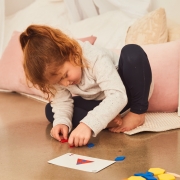
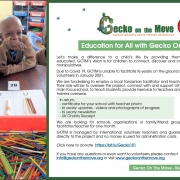 Edx Education
Edx Education 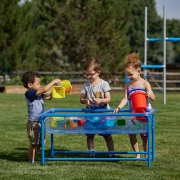
 edx education
edx education 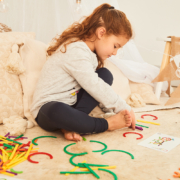 edx education
edx education  Edx Education
Edx Education 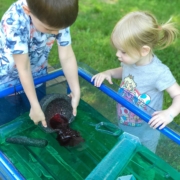 Edx Education
Edx Education 
